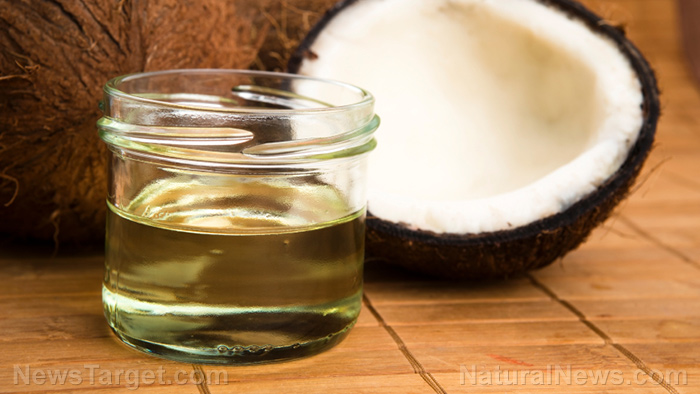Qianggan: A promising TCM for treating nonalcoholic fatty liver disease
06/22/2020 / By Evangelyn Rodriguez

The presence of fat in the liver does not immediately lead to health problems — so long as it does not constitute five to 10 percent of the liver’s weight. But when too much fat accumulates, it results in liver steatosis, a condition that’s usually triggered by excessive alcohol consumption. Liver steatosis can cause serious complications, especially when it develops in heavy drinkers or people who are obese.
There are cases, however, when fat abnormally accumulates in the livers of people who barely or never drink alcohol at all. This condition, known as non-alcoholic fatty liver disease (NAFLD), is a common form of liver disease in children, and affects an estimated 100 million people in the U.S. alone. According to studies, NAFLD usually develops in people who are overweight or obese and suffer from diabetes, high cholesterol and high triglycerides.
NAFLD has a progressive and more severe form known as non-alcoholic steatohepatitis (NASH). NASH causes the liver to be inflamed, become swollen and eventually sustain damage. About 20 percent of people with NASH develop liver cirrhosis — a condition marked by impaired liver function due to excessive scarring — while 30 to 40 percent die because of liver-related diseases, such as hepatocellular carcinoma, the most common type of liver cancer.
According to researchers Shanghai University of Traditional Chinese Medicine, scientific evidence of the potential of traditional Chinese medicines (TCM) to treat NASH is growing. One herbal formula, in particular, stands out as a safe, effective and promising treatment for both NAFLD and NASH. This TCM, known as qiang gan formula (QG), consists of 16 medicinal herbs, all of which have been reported to have other health-promoting properties.
To understand the mechanism of action of QG against NASH, the researchers used an unconventional, genetic-based approach that focused on the expression of coding and non-coding RNAs. They also identified potential biomarkers and drug targets for the treatment of NASH using this approach. The researchers reported their findings in an article published in the journal BMC Complementary and Alternative Medicine.
Qiang gan targets immune-related ceRNA networks to address NASH
Competing endogenous RNAs (ceRNAs) are the main components of an intrinsic mechanism that is believed to regulate biological processes. According to the ceRNA hypothesis, RNAs — the products of DNA transcription that code for proteins — have the ability to regulate each other and increase or decrease protein expression by competing for a limited pool of microRNAs (miRNAs).
In molecular biology, miRNAs are known as post-transcriptional regulators that influence the stability of RNAs and the rate of their conversion into proteins. RNAs naturally have complementary sites known as miRNA response elements (MRE), which interact with miRNAs. A single miRNA can suppress multiple RNA targets via MREs to prevent protein expression. Meanwhile, a single RNA can contain MREs for multiple miRNAs.
Previous studies suggest that a crosstalk between ceRNAs occurs to regulate important molecular processes, such as those involved in cancer development. To find out if QG influences the activity of ceRNAs relevant to NASH, the researchers first treated a NASH mouse model with the TCM. They then analyzed the expression profiles of different types of RNAs — messenger ribonucleic acids (mRNAs), long non-coding RNAs (lncRNAs) and circular RNAs (circRNAs) — using samples taken from the mice.
The researchers reported that QG significantly improved the symptoms of NASH, decreasing the levels of liver enzymes and inflammatory molecules in treated mice. Between normal mice (group I), untreated mice with NASH (group II) and treated mice with NASH (group III), the researchers identified 6,193 mRNAs, 5,692 lncRNAs and 4,843 circRNAs that were expressed differently. They also found 514 mRNAs, 1,182 lncRNAs and 443 circRNAs that were expressed differently between groups II and III.
Further analysis revealed that most of the overlapping mRNAs from the three groups were related to immune functions, such as natural-killer-cell-mediated cytotoxicity, the intestinal immune network for IgA production and T-cell receptor signaling. Besides identifying numerous immune-related hub genes, the researchers were also able to construct ceRNA networks, which involved two lncRNAs (Sngh1 and Slc36a3os), four circRNAs and several immune-related mRNAs (Cd28, Cd8a, Il15 and Klrk1).
Based on these findings, the researchers concluded that qiang gan likely targets lncRNA- and circRNA-associated immune ceRNA networks in order to alleviate NASH. (Related: Researchers identify protein that can protect against non-alcoholic fatty liver disease.)
Sources include:
Tagged Under: alternative medicine, ceRNA, Chinese medicine, disease treatments, herbal medicine, Herbs, immune system, liver damage, liver health, miRNA, NAFLD, NASH, natural cures, natural medicine, non-alcoholic steatohepatitis, qiang gan, research, RNA, TCM
RECENT NEWS & ARTICLES
COPYRIGHT © 2017 NATUROPATHY NEWS



















